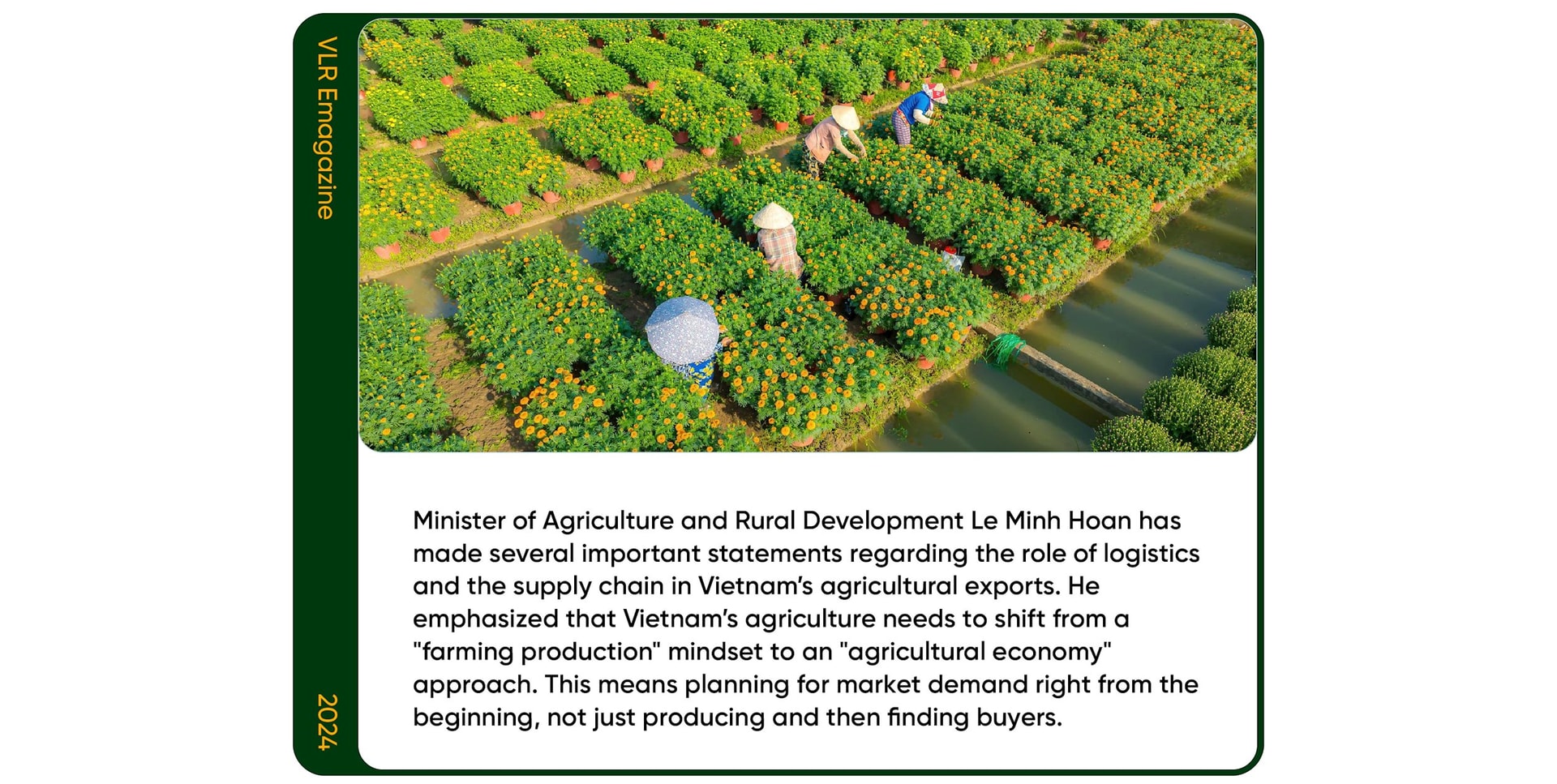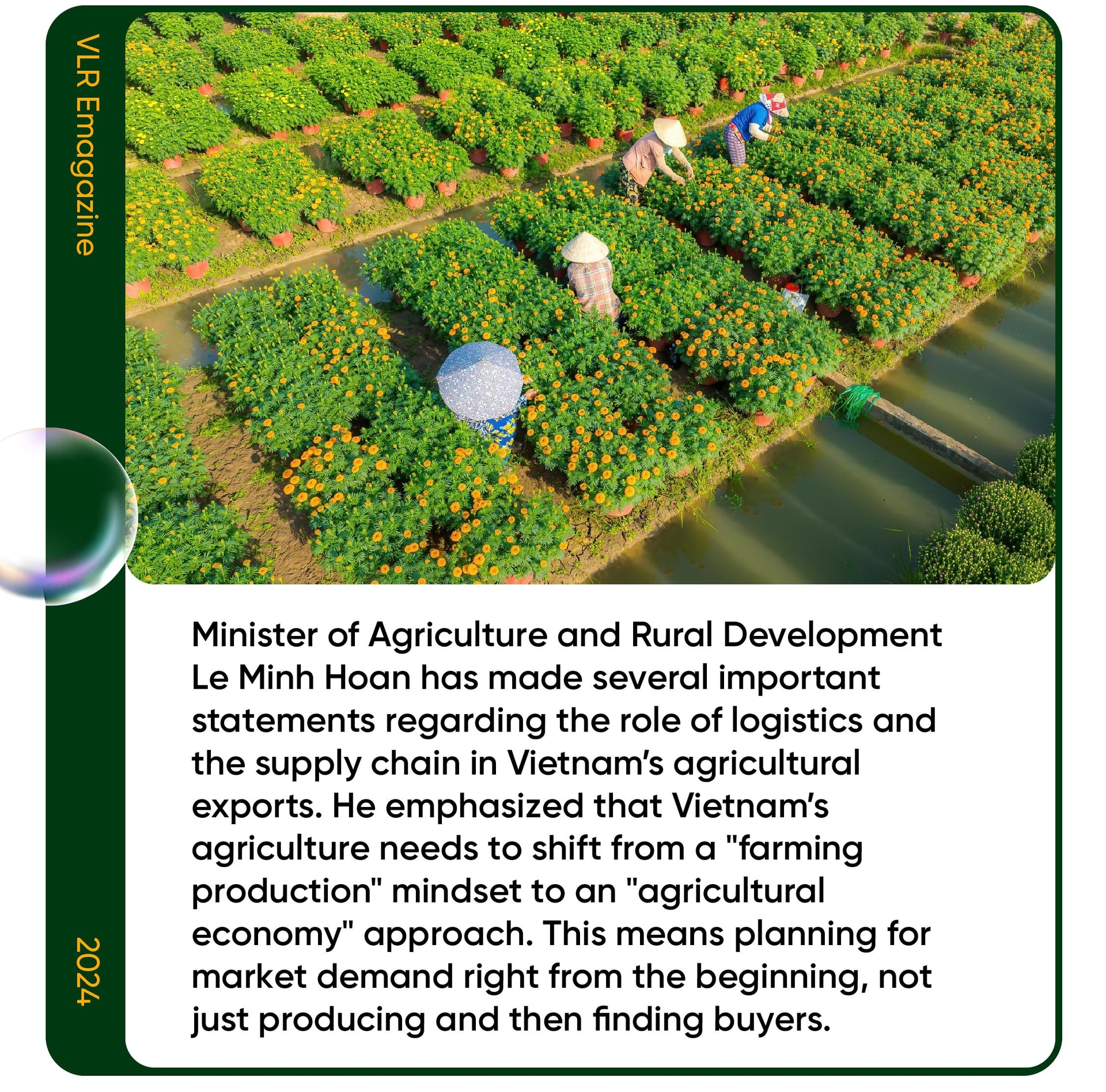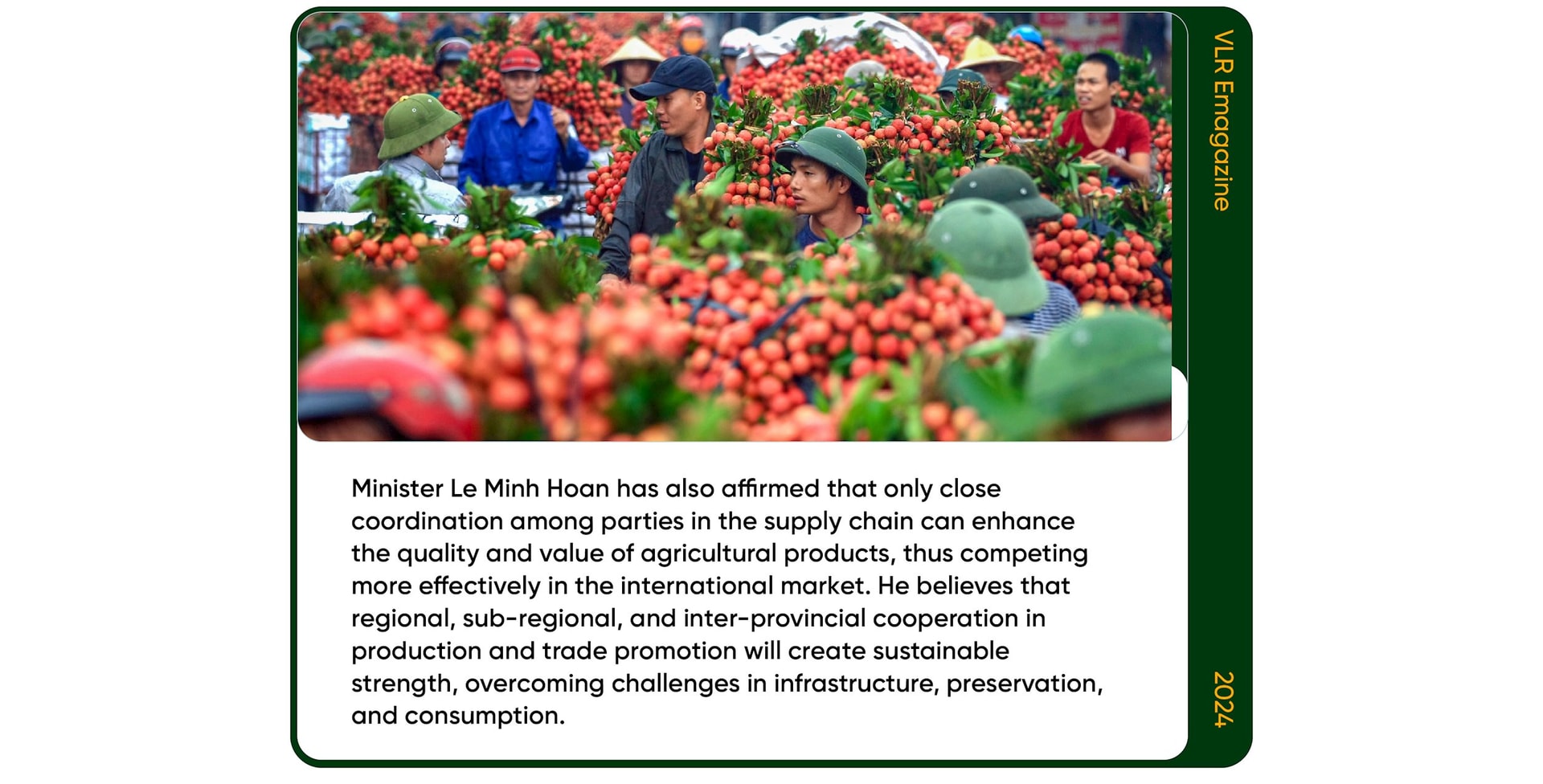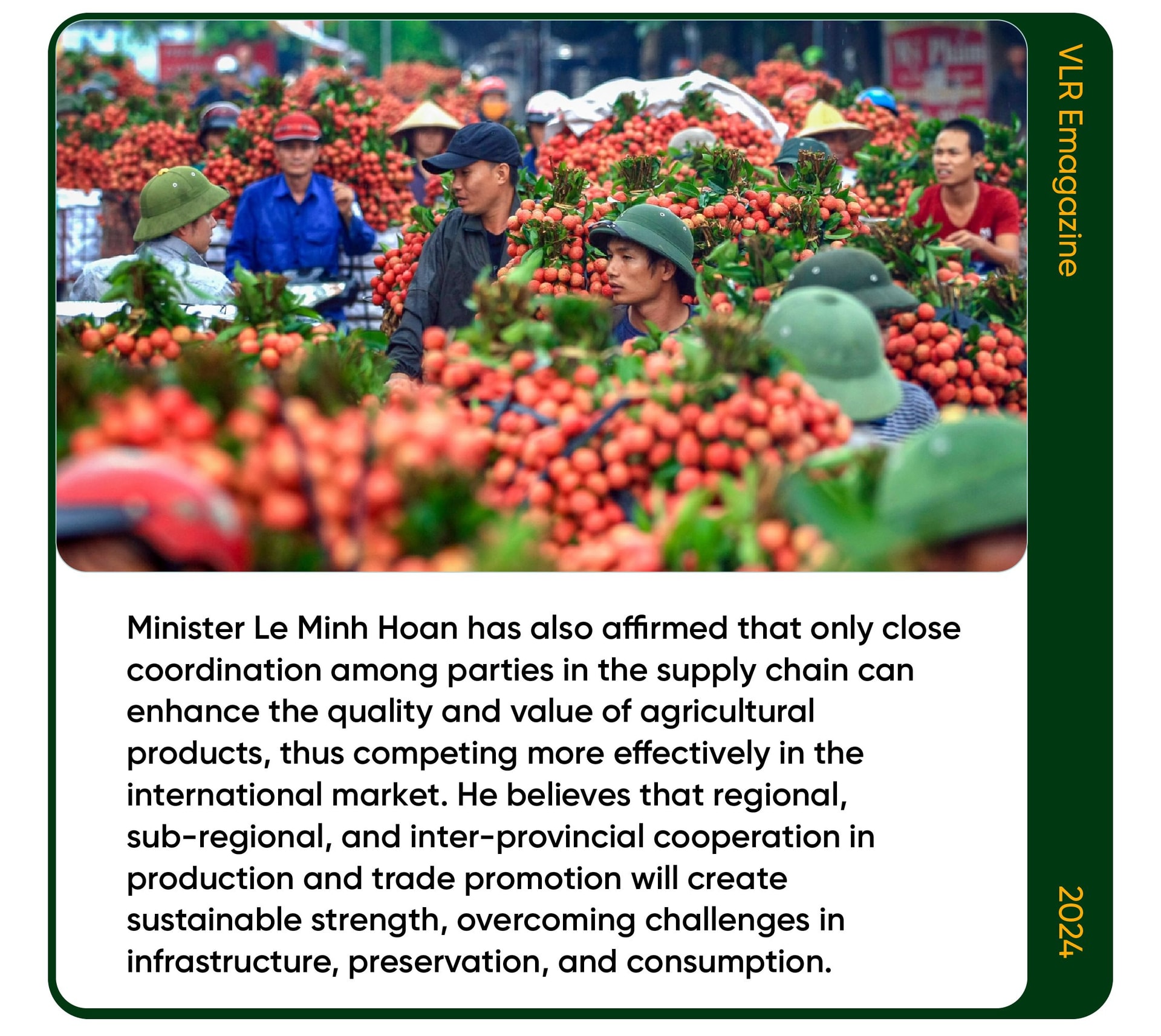Enhancing the Role of Logistics in Vietnam's Agricultural Export Supply Chain
English - Ngày đăng : 14:36, 21/10/2024
Vietnam's agricultural export sector has been steadily affirming its position in the international market, significantly contributing to the country's economic growth. However, the logistics capacity in the current supply chain still faces many challenges, from transportation and storage to export. This is particularly evident in key production areas such as the Central Highlands and the Mekong Delta, where urgent solutions are needed to enhance competitiveness in the global market.
CHALLENGES IN VIETNAM'S AGRICULTURAL LOGISTICS
Transportation Infrastructure Falling Short of Demand
The Central Highlands provinces, such as Đắk Lắk and Gia Lai, and the Mekong Delta (An Giang, Tiền Giang) are major production regions, providing large quantities of agricultural products for export. However, transportation infrastructure in these areas has not been uniformly invested in. The road networks and bridges are insufficient to meet the demand for transporting large volumes of goods. This creates difficulties in moving agricultural products from production areas to major export ports like Saigon Port and Cái Mép Port.

According to a report from the Ministry of Industry and Trade, transportation costs account for up to 30% of the product’s final price, higher than the average in other agricultural export countries. The potential of rail and waterways has not been fully exploited, leading to over-reliance on road transport, which causes congestion and delays.
Inadequate and Outdated Storage Technology
Agricultural products, especially fruits and vegetables, are highly perishable if not properly preserved. In major production areas, the number and quality of cold storage facilities and preservation centers remain limited. Many export businesses have reported that inconsistent storage conditions lead to a decline in product quality, directly affecting export value and the reputation of Vietnamese brands in international markets.
Experts from the Vietnam Agricultural Association also noted that post-harvest preservation and processing technologies in Vietnam are still outdated compared to developed countries. The disparity in preservation technology makes it difficult for Vietnam to compete with other agricultural exporting countries such as Thailand and China.


SOLUTIONS TO ENHANCE LOGISTICS CAPACITY
Investment in Upgrading Transportation and Logistics Infrastructure
One of the first and most crucial solutions is to invest in transportation infrastructure. The government has plans to develop road systems and bridges to connect major agricultural production areas with export ports. The North-South Expressway project and the expansion of railway and waterway routes will help alleviate pressure on the current transport system.
In addition, public-private partnerships should be strengthened to develop logistics centers in key agricultural regions like the Central Highlands and the Mekong Delta. Building these centers will help optimize the supply chain, reducing transportation time and improving product preservation.
Applying Technology to the Supply Chain
To improve the quality of preservation and transportation of agricultural products, businesses need to apply modern technology. Developing and implementing cold storage systems and advanced preservation technologies, such as vacuum packaging or controlled temperature and humidity environments, will help extend preservation times and ensure product quality.
Additionally, the use of intelligent logistics management software is another critical solution. These systems can track the transportation process, manage storage facilities, and forecast market demand, thereby optimizing the export process.

Developing a High-Quality Workforce
Another key factor in enhancing logistics capacity is developing a workforce with high expertise. Businesses need to invest in training employees in modern supply chain management skills, from warehouse management to transportation coordination and customs procedures.
Cooperating with international organizations and participating in specialized training programs is also a way for Vietnamese logistics companies to improve their expertise, enhancing their global competitiveness.
THE ROLE OF THE GOVERNMENT AND RELATED ORGANIZATIONS
Government Support Policies for Logistics Development
The government needs to implement policies that encourage investment in logistics infrastructure, especially in agricultural production regions. There should be tax incentives and financial support mechanisms for businesses investing in storage, preservation, and transportation systems for agricultural products.
The Ministry of Industry and Trade and the Ministry of Agriculture and Rural Development also need to closely cooperate with local authorities to develop supply chain logistics plans, from forecasting agricultural output to identifying export demand, helping businesses strategize for the long term.


International Cooperation and Learning from Experience
Learning from countries with advanced logistics systems, such as Japan, Singapore, or the Netherlands, is crucial. The government and Vietnamese businesses should actively participate in international forums to understand how these countries optimize their agricultural supply chains and logistics, and apply relevant experiences to the Vietnamese context.
Logistics plays a pivotal role in Vietnam's agricultural export supply chain. Addressing challenges in infrastructure, preservation, and improving logistics services will be the key to helping Vietnamese agricultural products compete more strongly in the global market. Achieving this will require a united effort from the government, businesses, and active international collaboration.
In the context of globalization and the opportunities brought by free trade agreements, Vietnam’s agricultural sector needs a modern, synchronized, and efficient logistics system. This is the path to enhancing competitiveness, increasing export value, and ensuring sustainable development for the country's agriculture.
